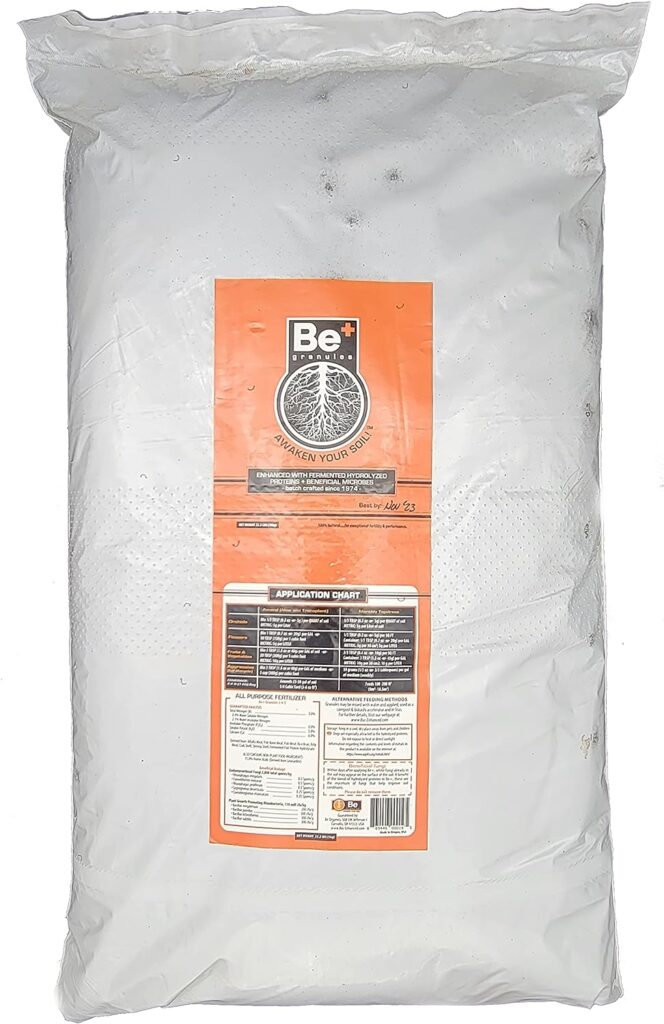Amino Acids
Amino Acids
Amino acids have a variety of uses and are used to naturally enhance foods, pharmaceuticals and cosmetics.
There are 200+ known amino acids and of the 22 standard amino acids, eight are considered essential amino acids.
Amino acids are the building blocks of proteins and of all cell formation. They are a vital part of many processes in plants, including photosynthesis. Containing nitrogen in the form of ammonium (fastest plant-available form), Amino Acids are also sources of energy, whereas other energy sources, such as fats and carbohydrates do not. Only amino acids can form the proteins that make up the human body (and plants) and they are essential for growth and repairing tissue.
For plants, many amino acids chelate and complex with nutrients to make it easier for plants to absorb, while correcting mineral deficiencies, preventing nutrient deficiencies, and improving the overall health of plants.
Amino Acids and Beneficial Microorganisms
When beneficial microbials, including bacteria, protozoa (amoebas, flagellates, ciliates) and mycorrhizal fungi attach to the amino acids in Be+, the microbes multiply exponentially. This reaction greatly increases the amount of plant-available nitrogen cycling potential available to plants.
A natural, symbiotic relationship, this process is often suppressed in the greenhouse and home-growing environments, where applying conventional salt-, commercial-, chemical-based fertilizers, soil quality will slowly deteriorate soil quality over time, killing any microbes and making more frequent replanting and replenishing of soil necessary, i.e. necessitating more conventional fertilizer to achieve the same results.
On the other hand, Be+ increases soil quality by encouraging the natural proliferation of these natural micro-organisms, and air, moisture and nutrition are maintained. Plant quality will show marked improvement, ultimately requiring less conventional fertilizers.
Further Reading:
1) Jeffries, Peter, Silvio Gianinazzi, Silvia Perotto, Katarzyna Turnau, and José-Miguel Barea. “The contribution of arbuscular mycorrhizal fungi in sustainable maintenance of plant health and soil fertility.” Biology and fertility of soils 37, no. 1 (2003): 1-16.
2) Masclaux-Daubresse, Céline, Françoise Daniel-Vedele, Julie Dechorgnat, Fabien Chardon, Laure Gaufichon, and Akira Suzuki. “Nitrogen uptake, assimilation and remobilization in plants: challenges for sustainable and productive agriculture.” Annals of Botany (2010): mcq028.
3) Moe, Luke A. “Amino acids in the rhizosphere: From plants to microbes.” American journal of botany 100, no. 9 (2013): 1692-1705.
4) Morgan, J. A. W., G. D. Bending, and P. J. White. “Biological costs and benefits to plant–microbe interactions in the rhizosphere.” Journal of Experimental Botany 56, no. 417 (2005): 1729-1739.
5) Phillips, Donald A., Tama C. Fox, Maria D. King, T. V. Bhuvaneswari, and Larry R. Teuber. “Microbial products trigger amino acid exudation from plant roots.” Plant Physiology 136, no. 1 (2004): 2887-2894.
6) YUAN, Wei, Yuan-hua DONG, and Hui WANG. “Uptake and utilization of amino acid nitrogen by plants [J].” Soil and Fertilizer Sciences in China 4 (2009): 003.
7) Yujie, Liu Qingcheng Xu Yulan Zhang. “A study on the fertilizer efficiency of amino acid.” Amino Acids & Biotic Resources 4 (1992): 000.
8) WANG, Ying, Zhen-sheng SHI, Zhi-bin WANG, and Feng-hai LI. “Absorption and utilization of amino acids by plant and application of amino acids on agiculture [J].” Soil and Fertilizer Sciences in China 1 (2008): 003.
Inquiries: info@Bio-Enhanced.com

